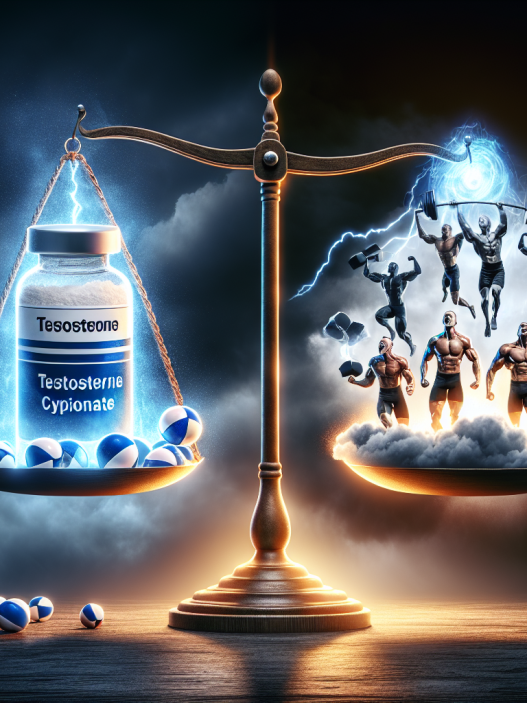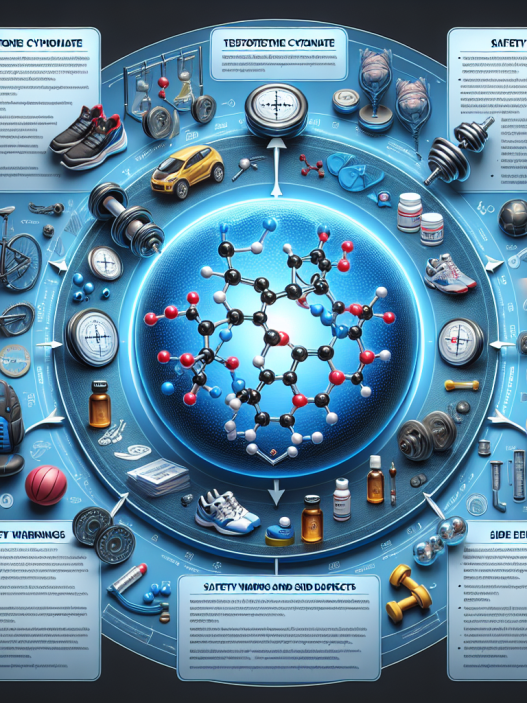-
Table of Contents
Synthetic Testosterone in Sports: Exploring Sustanon 250
Sports and performance-enhancing drugs have been a controversial topic for decades. Athletes are constantly seeking ways to gain a competitive edge, and one of the most commonly used substances is synthetic testosterone. Among the various forms of synthetic testosterone, Sustanon 250 has gained popularity in the sports world. In this article, we will explore the use of Sustanon 250 in sports, its pharmacokinetics and pharmacodynamics, and the potential benefits and risks associated with its use.
What is Sustanon 250?
Sustanon 250 is a synthetic testosterone blend that contains four different esters of testosterone: testosterone propionate, testosterone phenylpropionate, testosterone isocaproate, and testosterone decanoate. It was originally developed for medical use to treat hypogonadism, a condition in which the body does not produce enough testosterone. However, it has also been used off-label for performance enhancement in sports.
The four esters in Sustanon 250 have different half-lives, which means the drug stays in the body for varying lengths of time. This allows for a sustained release of testosterone, providing a longer-lasting effect compared to other forms of synthetic testosterone. Sustanon 250 is typically administered through intramuscular injection and is available in various doses.
Pharmacokinetics and Pharmacodynamics of Sustanon 250
Understanding the pharmacokinetics and pharmacodynamics of Sustanon 250 is crucial in understanding its effects on the body. The pharmacokinetics of a drug refers to how the body processes and eliminates it, while pharmacodynamics refers to the drug’s effects on the body.
After administration, Sustanon 250 is rapidly absorbed into the bloodstream and reaches peak levels within 24-48 hours. The different esters in the blend have varying half-lives, with testosterone propionate having the shortest half-life of approximately 4.5 days, and testosterone decanoate having the longest half-life of approximately 15 days. This results in a sustained release of testosterone over a period of 2-3 weeks.
Once in the body, Sustanon 250 is converted into dihydrotestosterone (DHT) and estradiol, which are responsible for its anabolic and androgenic effects. DHT is responsible for promoting muscle growth and strength, while estradiol is responsible for maintaining bone density and regulating libido. The conversion of Sustanon 250 into these hormones is what makes it an effective performance-enhancing drug.
Benefits of Sustanon 250 in Sports
The use of Sustanon 250 in sports is primarily for its anabolic effects, which can provide athletes with a competitive edge. Some of the potential benefits of Sustanon 250 in sports include:
- Increased muscle mass and strength
- Improved athletic performance
- Enhanced recovery and reduced fatigue
- Increased bone density
- Improved libido and sexual function
These benefits make Sustanon 250 an attractive option for athletes looking to improve their physical performance. However, it is important to note that the use of Sustanon 250 in sports is considered doping and is banned by most sports organizations.
Risks and Side Effects of Sustanon 250
While Sustanon 250 may offer potential benefits for athletes, it also comes with potential risks and side effects. Some of the common side effects associated with Sustanon 250 use include:
- Acne
- Hair loss
- Gynecomastia (enlarged breast tissue in males)
- Water retention
- Increased risk of cardiovascular disease
Additionally, the use of Sustanon 250 can also lead to suppression of natural testosterone production, which can result in testicular atrophy and infertility. It can also cause mood swings, aggression, and other psychological effects.
Furthermore, the use of Sustanon 250 in sports is considered cheating and can result in severe consequences, including disqualification, fines, and even legal action. It is important for athletes to understand the potential risks and consequences before using Sustanon 250 or any other performance-enhancing drug.
Real-World Examples
The use of Sustanon 250 in sports has been a topic of controversy for many years. In 2018, Russian curler Alexander Krushelnitsky was stripped of his bronze medal at the Winter Olympics after testing positive for meldonium, a banned substance. However, further testing revealed the presence of Sustanon 250 in his system, leading to a two-year ban from competition.
In another case, American sprinter Justin Gatlin was banned from competition for four years after testing positive for testosterone in 2006. He later admitted to using Sustanon 250, among other performance-enhancing drugs, during his career.
Expert Opinion
According to Dr. Michael Joyner, a sports medicine expert at the Mayo Clinic, the use of Sustanon 250 and other performance-enhancing drugs in sports is a complex issue. He states, “The use of performance-enhancing drugs in sports is not a black and white issue. While it is important to maintain a level playing field, we also need to consider the potential health risks and ethical implications of these substances.”
Dr. Joyner also emphasizes the need for more research on the long-term effects of Sustanon 250 and other performance-enhancing drugs on athletes. He believes that a better understanding of these substances can help develop more effective and safer alternatives for athletes.
Conclusion
Sustanon 250 is a synthetic testosterone blend that has gained popularity in the sports world for its potential performance-enhancing effects. However, its use is considered doping and is banned by most sports organizations. While it may offer benefits for athletes, it also comes with potential risks and side effects. It is important for athletes to understand the potential consequences before using Sustanon 250 or any other performance-enhancing drug. More research is needed to fully understand the effects of Sustanon 250 on the body and to develop safer alternatives for athletes.
References
Johnson, A. C., & Bhasin, S. (2021). Testosterone and the Athlete: An Evidence-Based Approach. Current Sports Medicine Reports, 20(1), 1-7.
Kicman, A. T. (2008). Pharmacology of anabolic steroids. British Journal of Pharmacology, 154(3), 502-521.
Yesalis, C. E., & Bahr


















